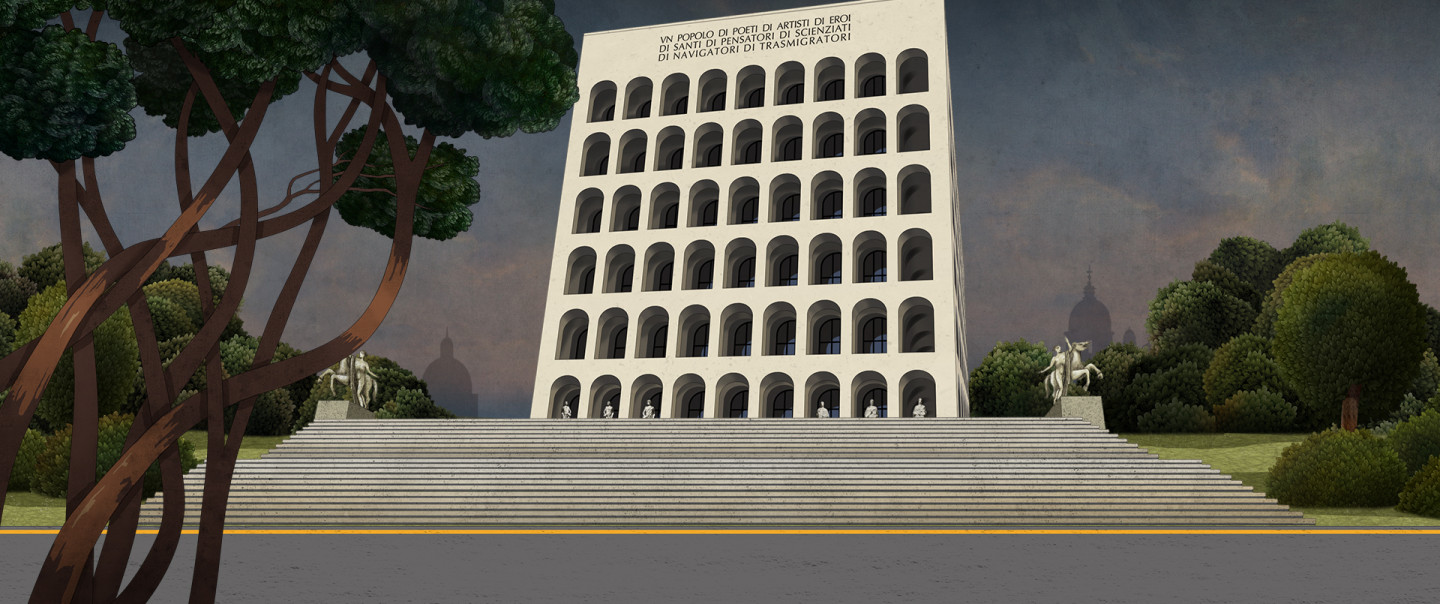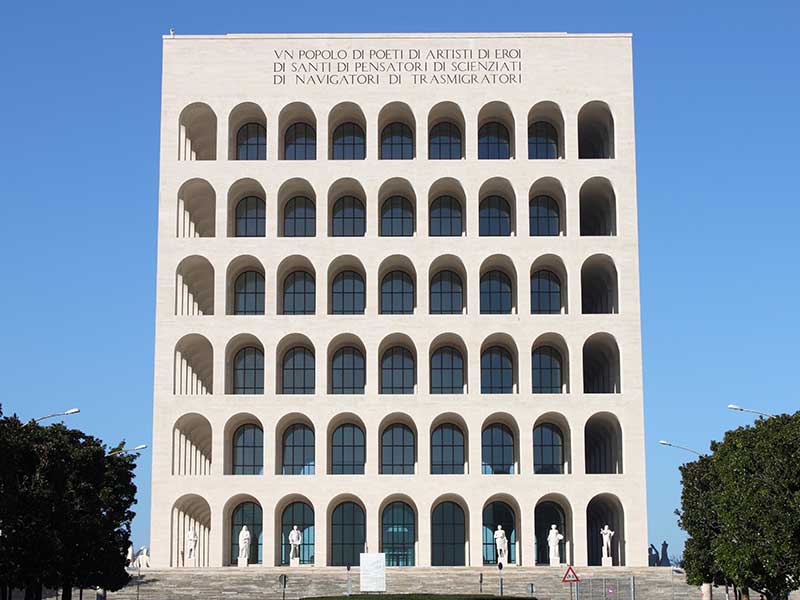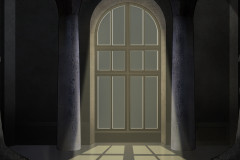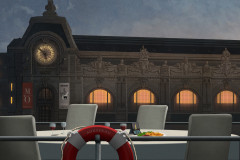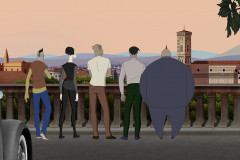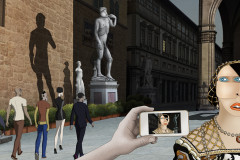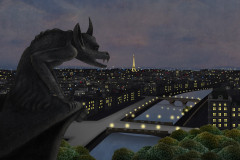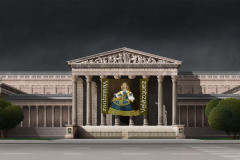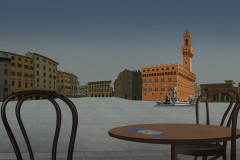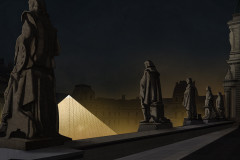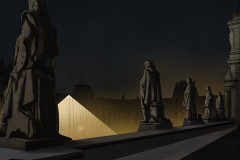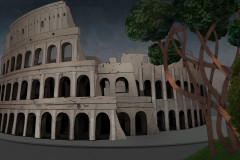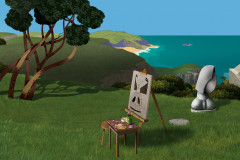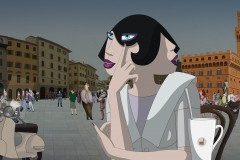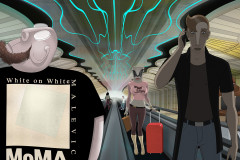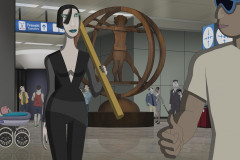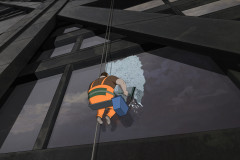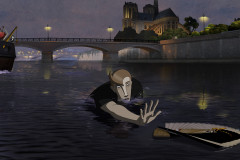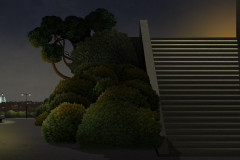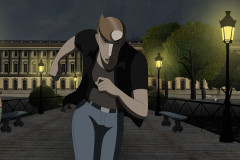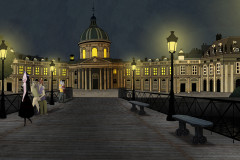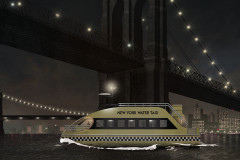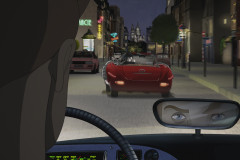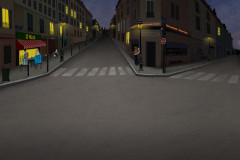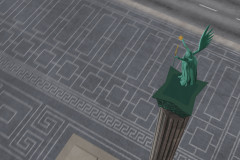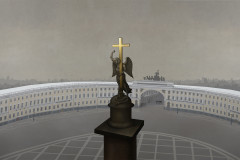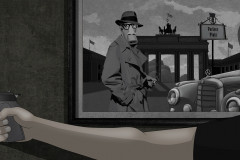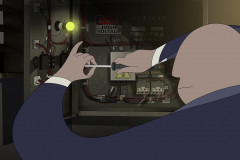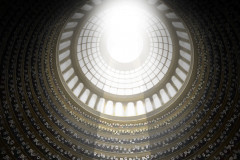Ez a monoton, mégis monumentális épület az Olasz Civilizáció Palotája, és a fasizmus építészetének képviselője. Az 1942-es római világkiállításra terveztette Benito Mussolini, mint a fasizmus jelképe. A kiállítást a II. Világháború miatt végül törölték, bár a Palazzo akkor már majdnem készen volt. A „Négyzetes Colosseum” a római EUR negyed meghatározó eleme ma is. Nem véletlen a párhuzam az ókori emlékkel: a Colosseum mind formavilágát tekintve (több szintes árkádsor), mind szimbolikájában (az uralkodó politikai erejét jelképezi) előképe volt a Palazzo della Civiltá Italiana-nak. A földszinti szobrok allegorikus alakjai és az épület körül elhelyezett görög istenek szobrai carrara-i márványból készültek. A palotához monumentális lépcsősor vezet fel.
A Palazzo della Civiltá Italiana-val is akkor találkozunk a filmben egy pillanatra, amikor a Colosseum is feltűnik. A csapat első „hivatalos” bevetése Rómából indul, szürke kocsijukban elautóznak a két épület előtt. Mindkét mű a helyszínre tett utalás. Egy emlék az ókorból, egy a 20. századból. Így nem csak a két épület, hanem az őket létrehozó korok is párhuzamba vannak állítva. Vespasianus vs. Mussolini. A római császárok egyeduralmához hasonló önkényuralmi rendszer volt a fasiszta diktatúra is Olaszországban.
Palazzo della Civiltà Italiana
This monotonous yet monumental building is the Palace of Italian Civilization—a prime example of Fascist architecture. It was commissioned by Benito Mussolini for the 1942 World’s Fair in Rome, intended as a symbol of Fascism. The exhibition was ultimately canceled due to World War II, though the Palazzo was nearly complete by then. Today, the “Square Colosseum” remains a defining feature of Rome’s EUR district. The reference to the ancient structure is no coincidence: in both form (multi-tiered arcades) and symbolism (a representation of political power), the Colosseum served as a clear precedent for the Palazzo della Civiltà Italiana. The allegorical statues on the ground floor and the surrounding figures of Greek gods are carved from Carrara marble. A grand staircase leads up to the palace.
The Palazzo della Civiltà Italiana makes a brief appearance in the film at the same moment as the Colosseum. During the team’s first “official” mission, they drive past both buildings in their gray car. These visual cues serve to anchor the story in Rome. One monument represents antiquity; the other, the 20th century. In this way, the film draws a parallel not only between two buildings, but also between the eras that produced them—Vespasian versus Mussolini. Like the emperors of ancient Rome, the Fascist dictatorship was built on authoritarian rule.






